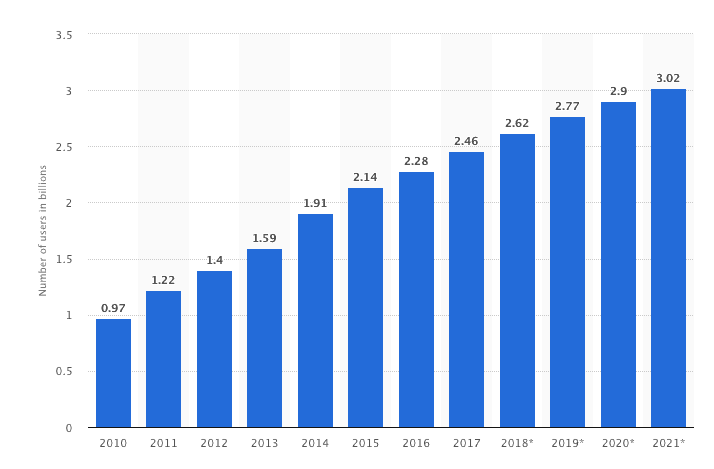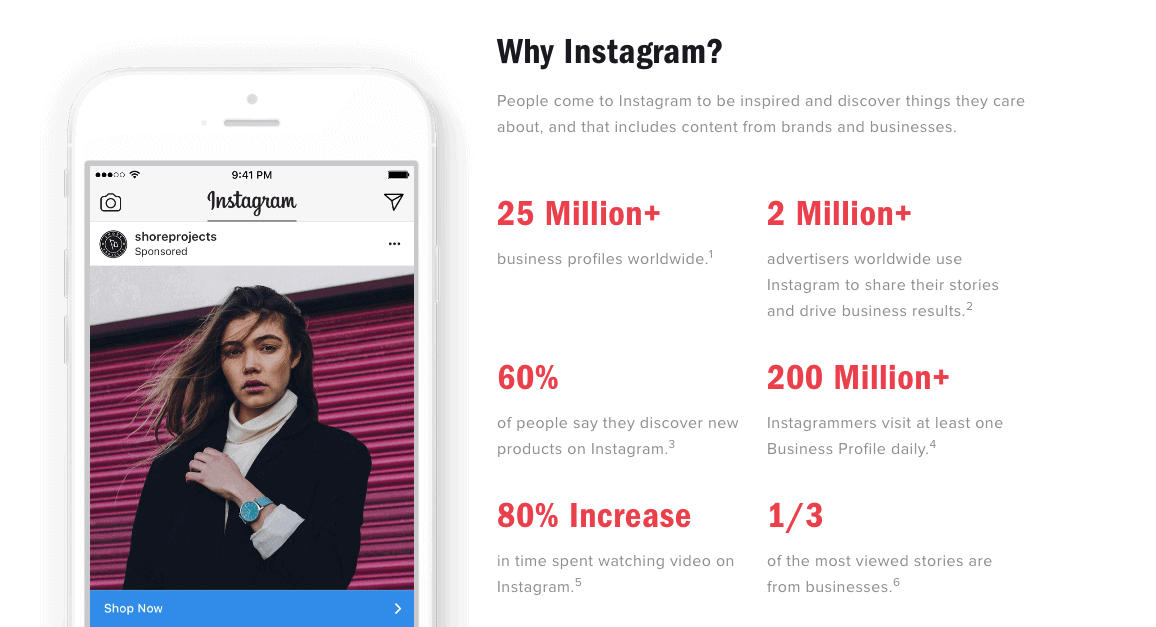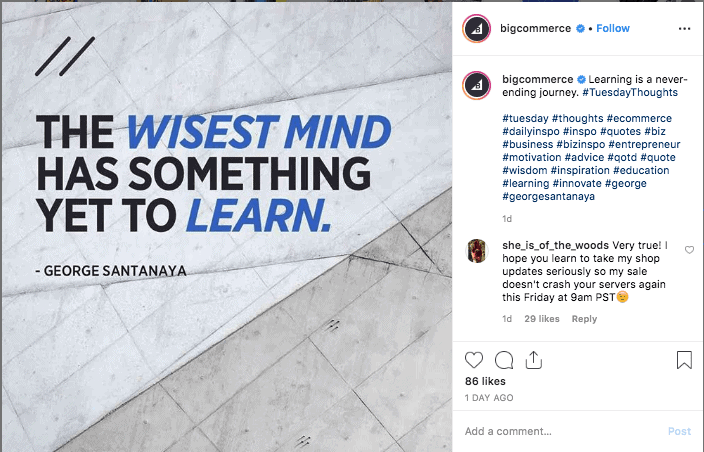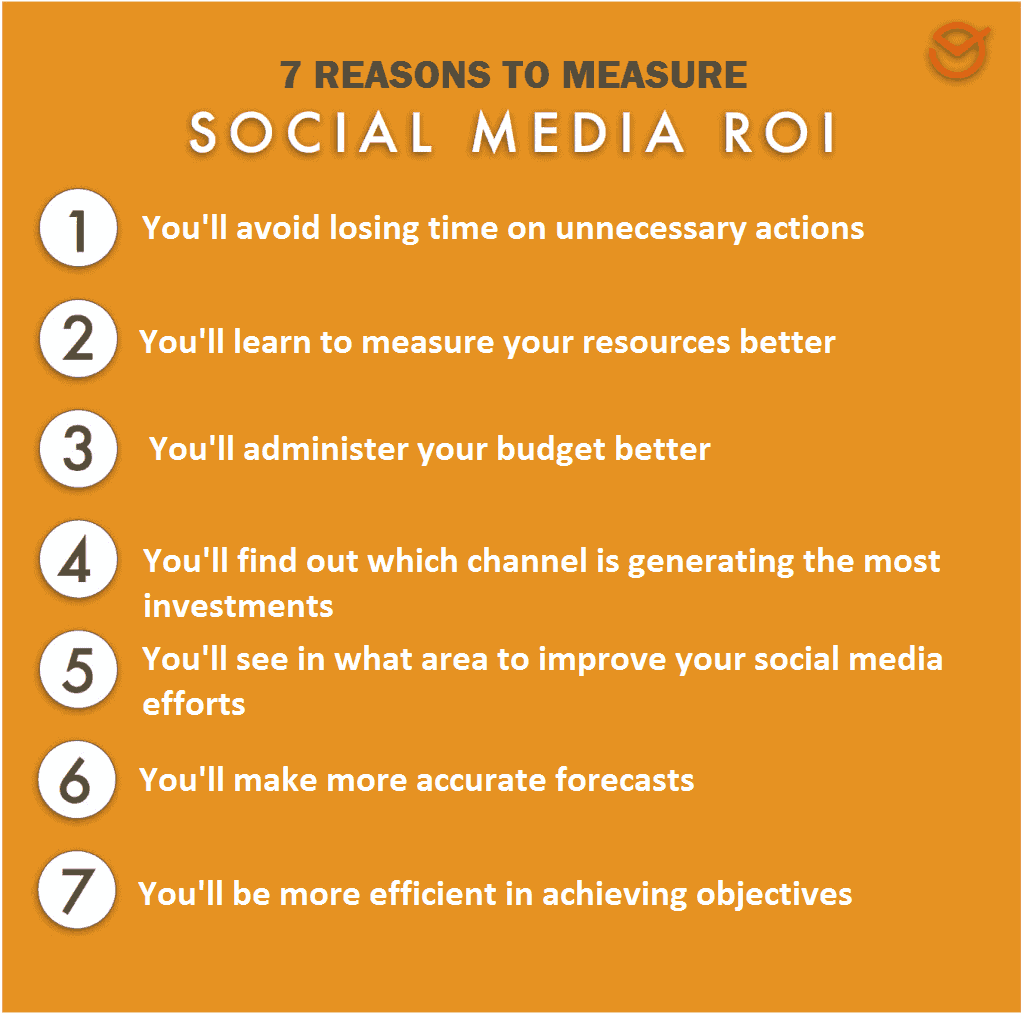4 Steps To Building A Successful Social Media Marketing Strategy (2019)
Lots of people are talking about social media marketing. Do social media ads work? Are they worth your time and money? The short answer is, yes.
The long answer is… well, just keep reading for 4 steps to building a successful social media marketing strategy!
What Is Social Media Marketing?
Social media has become the number one most common form of communication today, and it doesn’t show any signs of stopping. As social media keeps getting better and more advanced, and more users make use of it, the appeal becomes increasingly higher. Using social media, you have an enormous potential marketing network right at your fingertips. According to a study by Statista, there are 2.77 billion people who use social media daily, and that number is only supposed to increase in the coming years. According to their infograph, by 2021 the number of social media users will be well over 3 billion. Over 81% of people in the United States has a social media profile, and the estimated user spends more than 215 minutes weekly on social media via smartphone, 61 minutes weekly via PC, and 47 minutes weekly on social media via a tablet device. Out of all these users, as many as 51% of people have admitted to clicking on an ad, and 48% have purchased something after seeing an ad. If you’re not making use of the largest online platforms for marketing, then you’re missing an opportunity for a high click through rate, and a high return on your investment.
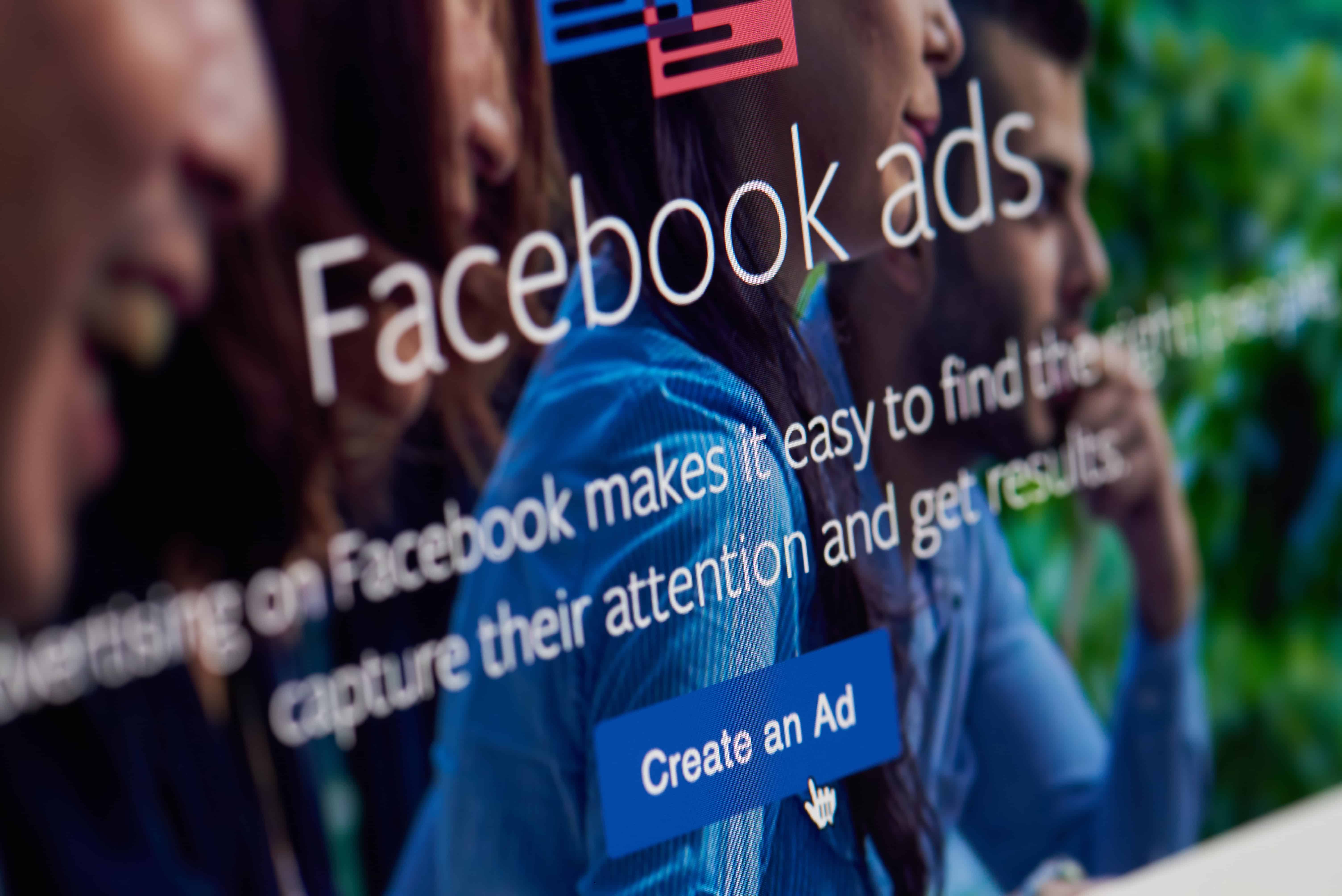
Facebook Ads were originally introduced in November of 2007, and their social media marketing services launch claimed to provide three key tools to their business owners. A way for businesses to build pages on Facebook to connect with their audience. An ad system that facilitates the spread of branding virally through Facebook Social Ads. And an interface to gather insights into people’s activity on Facebook. Instagram was not far behind with an ad launch of their own in November 2013, followed by Pinterest in December of 2014. These platforms allow you to target ads by interest (other related pages or images they like or follow), age, gender, and many other factors. Research shows that as ads get more relevant, users are turning to social media for purchasing research and inspiration. Which is great news for you, as a marketer, because that means your target audience is primed to buy!
How Successful Is Social Media Marketing?
According to a study by Curulate, 76% of U.S. consumers have purchased a product they saw in a brand’s social media post. Sometimes this isn’t reflected in your conversion rate. 65% of these people purchased the product at a later date. 20% of them saw an ad online, and proceeded to buy in-store. But this is also encouraging, because if you have a brick-and-mortar store, marketing with social media is not only expanding your reach to long-distance sales, it is also sending local traffic directly to you.

How Do You Build A Successful Social Media Marketing Strategy?
1. Know Your Audience
One thing most users can agree on, is that they don’t actually LIKE ads. 78% of users think there are to many ads, 635 of users say they only see a few things advertised repetitively, and 44% of users find the ads irrelevant to their needs and wants. So how can you target your desired audience, improve their overall experience with your ad campaign, and benefit your brand’s long-term reputation? Here are a couple of quick steps.
- Be Honest About What You Can Deliver
In a world of online customer reviews, it’s important to be honest about your product. Your mission is to enlighten your customer on their need for your product, and fill that need with not only a great product, but a great experience. - Focus On Quality
Ads on Facebook are leaning more towards video, as opposed to text only or photo ads. It’s easier to fit more information and brand personality into a 3 minute video than a still image with a caption. But user attention span is down from watching an average of 18 seconds of video, to 10 seconds of video. So how do you combat these statistics? You’re going to have to create quality content. Put effort and energy into stunning video and graphics, trendy fonts, and good music. Putting an effort into producing not just informative but also eye-catching, quality ads will help sustain your brand. If you’re creating relevant video content to what your audience wants to see, you’re not only capturing buyers attention, but their loyalty.Sometimes quality content doesn’t mean high-end and ultra-professional: don’t be afraid to be bold with marketing, it it’s what your target audience is looking for. One of the most successful video ad campaigns ever was this genius ad from Dollar Shave Club. Created on a tiny budget of $4,500, this ad generated almost 22 million views. Use your strengths, know your audience, and don’t be afraid to get creative!
2. Communicate With Your Customer
One of the best parts of social media marketing is that it opens up channels to a relationship with your potential customer. Since social networks let you to communicate with your audience directly, you are making your brand more personable. For instance, Instagram reports that one-third of the top-viewed Instagram Stories are made by business accounts, and one in five stories receives a direct message from a viewer. More than 150 million users have a conversation with businesses through Instagram Direct Message each month.
Good branding is built on reliability and trust. Trust is nurtured through relationship. The more you can relate to your target audience, and communicate with them directly, the more credibility you have. This credibility will not only benefit your marketing with social media, but will also increase your overall conversion rate
3. Build Your Brand
- Be Consistent Across Social Media Platforms
Building your brand will take time and dedication. It never happens overnight. Make sure that you’re committed to displaying a unified brand essence across any platform of social media you use, from Facebook, Twitter, and Pinterest, to your personal blog and webpage. Use consistent fonts, colors, style, language, graphics, and voice. It’s also important to be consistent in your online presence. Not just having a recognizable voice, but being present on-schedule. Sometimes it’s helpful to establish a routine using already-popular tags like #TBT for throwback photos on a Thursday, or posting inspirational content for #TuesdayThoughts. Whatever your routine, make sure your audience knows where they can find you, and when.
- Be Intentional With Your Logo Design
Your logo should represent your brand’s philosophy. Before you design your logo, make sure you brainstorm the mission statement or vision of your brand. What do you represent? What do you offer? What do you believe in? Consider what statement you want your logo to make. - Use The Right Colors
Believe it or not, even the colors of your branding are important. There are meanings and impact in every color that have been proven to influence buying decisions. For instance, did you know that red symbolizes energy and boldness, while green represents friendliness and openness? Consider your brand, your voice, your vision, your mission, and then decide what colors best represents you and your brand - Be Human
There is nothing that customers hate more than feeling like they’re being talked to by a corporation or a machine. There is so much importance to this that the popular Discover It Card commercials based their entire campaign on the fact that with Discover Card you talk to a real person. When building your brand, you have to develop a personality as well. Converse like a human would. Respond to enquiries on a first name basis. Engage. Care. Focus on building a relationship with your customers. - Post Relevant Content
The more content you post that is interesting and engaging, the more users will watch your content and keep coming back for more. What is relevant content to your users? Relevant content is content that answers questions and meets the needs of your ideal customer. Content that increases social shares because of it is useful, creative, unique or interesting. Content that engages your audience and increases the amount of time a customer will spend on your page. Great content comes from always thinking about the needs of your customer. If you know what your customers want, and you can deliver it, you’re generating some quality, relevant content for your audience.
4. Generate Backlinks To Your Website To Drive Traffic And Boost SEO
Backlinks, or sites that link back to your website, are one of the highest ranking factors for search engines like Google. These will help you boost your SEO (or “search engine optimization”), as well as increase your organic traffic. Since traffic is directly related to the quality of the backlinks your site has, authoritative websites that link back to your site will boost your SEO rankings even more. Search engine “crawlers” that monitor your site for SEO are always looking at your website’s backlinks to understand how your pages are connected to other high-ranking content on the web. There are lots of great ways to generate backlinks, but here are just a few easy things you can try to generate more backlinks to your website to drive traffic and boost SEO.

- Broken-Link Building Method
This method is a great way to get your site noticed by an authoritative site that may not otherwise have used you as a resource. Search for relevant keywords to content or products that you provide. You can download a plugin for Google Chrome called Check My Links to view content that is similar or related to your own. When you find a link on a webmaster’s site that is broken, you send a message notifying the webmaster of their broken link. At the same time, you recommend other websites (specifically, your own) to replace their broken link. You’re doing a webmaster a favor by reporting his broken link, and helping him make sure his content remains quality and authoritative, and the chances of them using a backlink to the site you recommend are high. - Create Infographs
Everyone loves visual data. One of the most useful tools for a blog post are infographs, which show relevant information in a concise, visual graph. Lots of other content creators can find and use your infograph, and will link it back to your site for credit. Make sure you create infographs that are unique and interesting to your audience. Follow current trending topics and see what people are searching for, then create your own infograph using the statistical data you find. - Build Internal Links
This is a great step that is easy, but incredibly key for running a successful blog. When you continually link back to other material on your site, it allows users to easily navigate throughout your website, which will increase overall user experience, as well as your SEO ranking.It is recommended that you use 2-5 backlinks in every blog post or article you write for optimal SEO ranking.
How To Measure Your Social Media Return On Investment
Many marketers are struggling to calculate their ROI (or “return on investment”) with social media ads. But there are a lot of great reasons to measure your social media ROI. After you’ve dedicated yourself to creating your social media strategy, you’ve put in the time and money to deliver quality content, you’ve interacted with your customers, you’ve built up your brand… how do you determine if it’s all been worth the investment?
There are a couple of different ways to measure success in social media ROI.
First you need to determine what kind of return you’re measuring. If you’re determining success by garnered revenue, there is a simple formula you can use that looks like this:
Revenue / Investment (ad budget, man hours, etc.)
x 100 = Social Media Revenue ROI (as a percentage)
So, if you made $1,000 in revenue from social media on a $500 investment, your profit is $500 (remember: profit = revenue – investment). And then your calculation would be: $500 profit / $500 investment X 100 = 100% return on your investment.
However, you can’t always measure value in dollars and cents. Try to take a comprehensive look at your social media marketing strategy. Is it paying off in ways other than revenue?
If your goal is simply brand awareness, you would want to measure your success rate by click-through rate, audience reach and engagement.
If your goal is more website traffic, you can use analytics to measure how many of your website visitors are generated from your social media ad campaign.
There are countless ways that social media marketing can pay off. Never short-change your potential success by limiting it to mere dollars and cents!
Don’t forget, we are your friendly neighborhood social media specialists, and we are here to help your business succeed. If you’d like to schedule a meeting to talk about your needs and our social media marketing services, don’t hesitate to contact us today!





